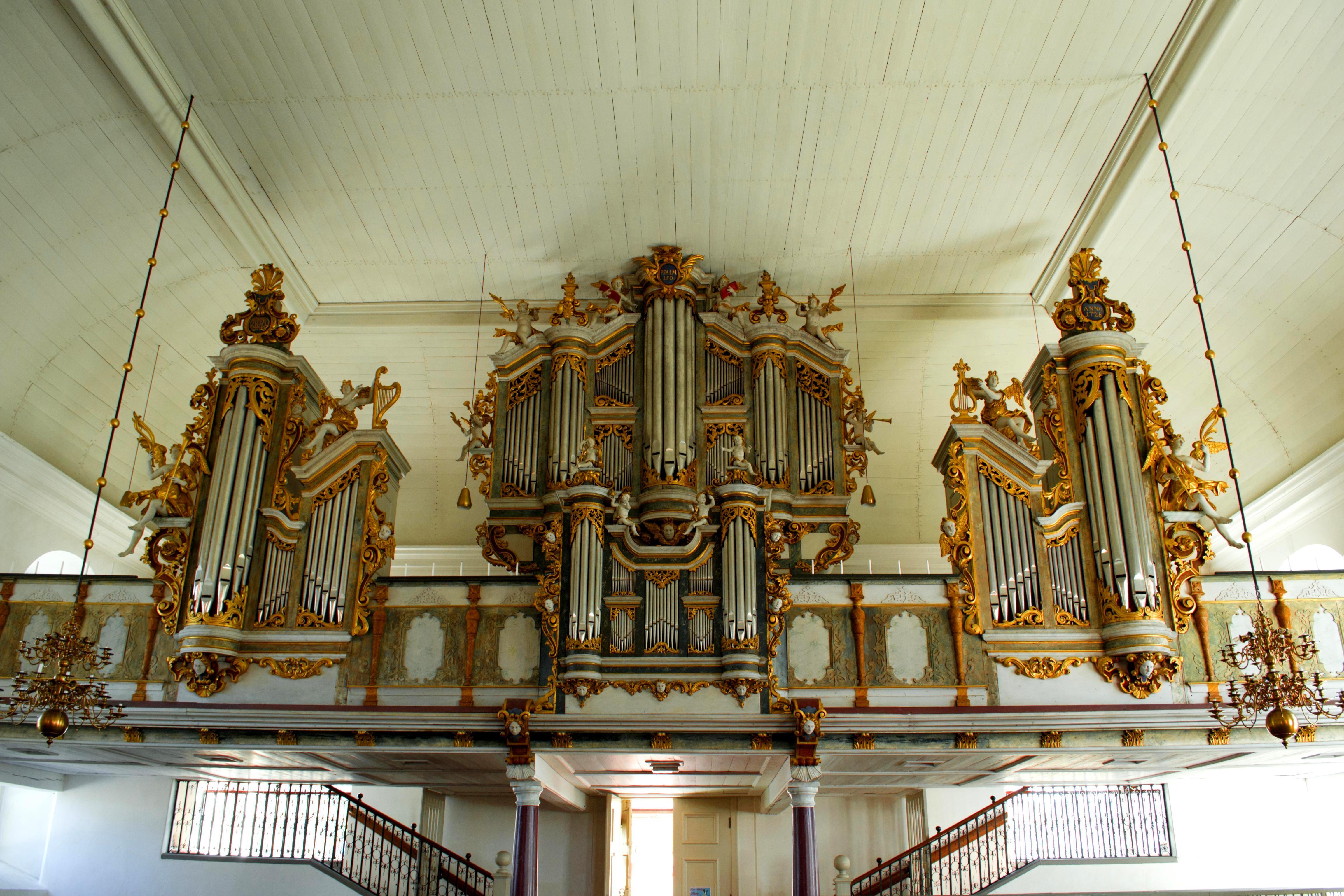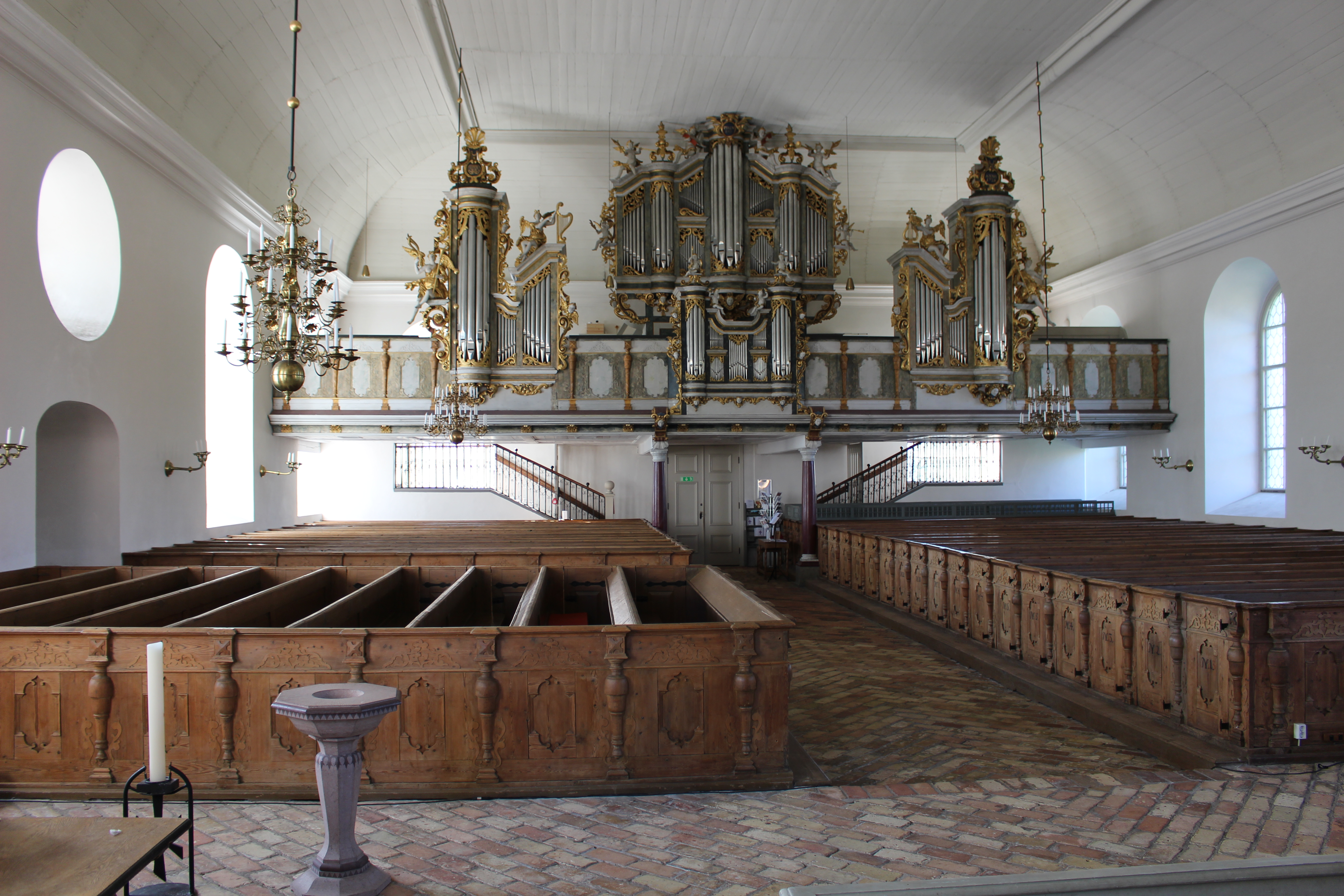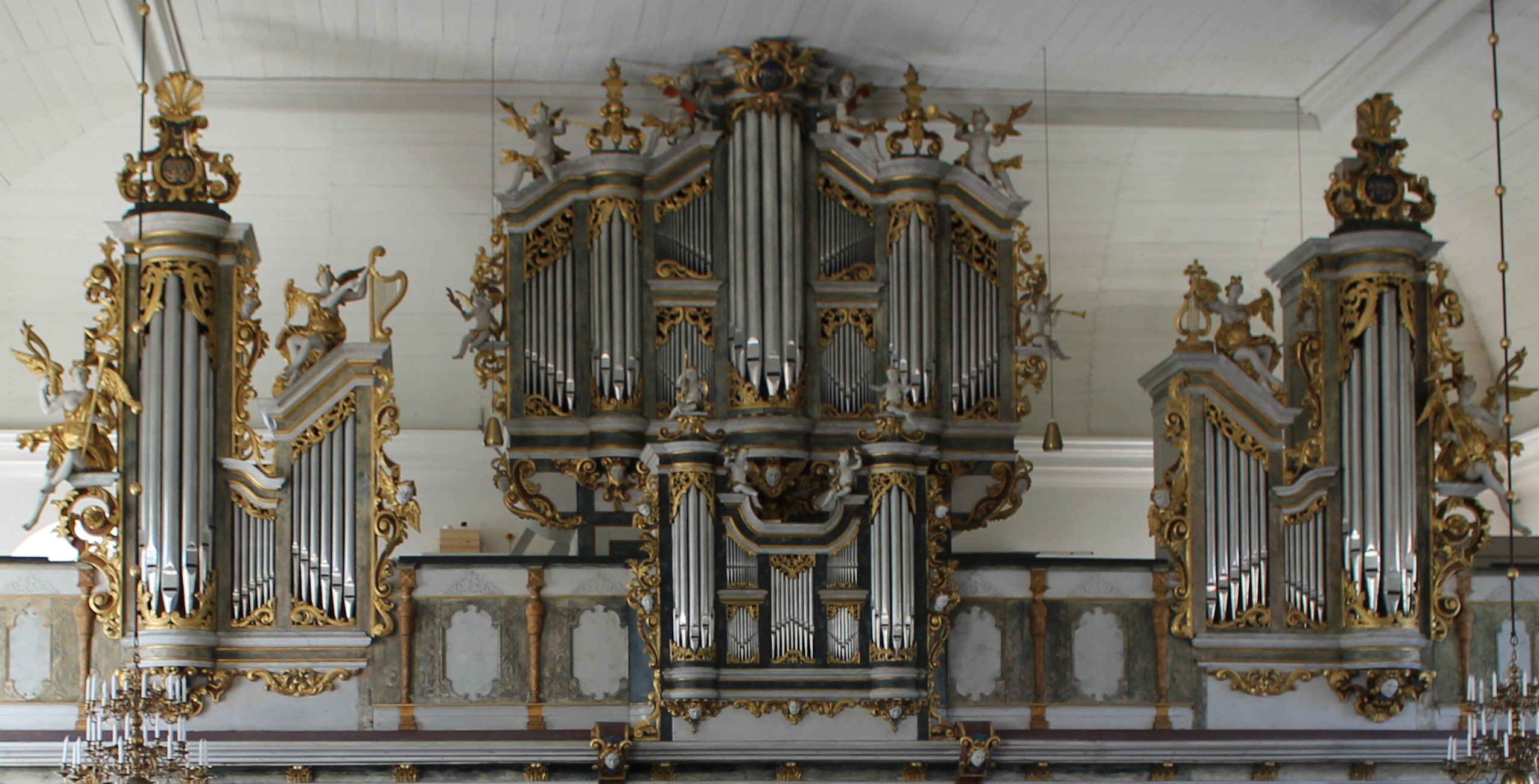Lövstabruk, Lövstabruks kyrka
| Builder | J. N. Cahman |
|---|---|
| Year | ca. 1728 |
| Period/Style | Baroque |
| Stops | 28 |
| Keyboards | 2+P |
| Keyaction | tracker/mechanical |
| Tuning | Neidhardt 1724 "for a village" at 466.16 Hz |
The pipe organ was created in 1728 by Johan Niclas Cahman, based in Stockholm. After signing a contract on December 20, 1726, for a two-manual organ with 28 stops, between the organ builder Cahman and Freiherr Charles De Geer zu Leufsta, the construction of this organ took place from 1725 through 1728. This design also contained slider chests and back positive, including pedal towers incorporated into the gallery railing. The organ was tuned in choir pitch and temperament was unequal.
By 1773, Olof Schwan, also based in Stockholm, repaired the organ addressing issues with its air supply. Another unnamed organ builder altered the main work's Qvintadena 16' to Borduna 16' during restoration in 1858.
In 1912, Olof Strindberg relayed through a letter about the inauguration of a new organ, which was in fact a harmonium. The organ was preserved even after the death of Freiherr Carl de Geer in 1914. Between 1914 and 1916, due to the organist's complaint that he could not see or hear the priest from the harmonium, the back positive's pipes were cleared out.
In 1933, Bertil Wester from Stockholm initiated a renovation program for Cahman organs, which was openly accepted by local organ builder John Vesterlund. He refilled the back positive with remaining pipes from the church floor, constructed about 100 pipes for the mixture and Vox Humana. Furthermore, a pneumatic action was implemented and the wind system was improved with a magazine bellows. After the inauguration in October 1933, Gunhild Schedin performed compositions from Pachelbel, Buxtehude, and Handel.
Bo Wedrup, and Eric Dalin from Uppsala, performed repairs in 1946. Restoration occurred through the workshop Marcussen & Son, Aabenraa in 1963-1964. Mechanical action was reintroduced to the back positive and the mixture and Vox humana were replaced. The former bellows was left untouched while the 1933 supplemental magazine bellows was replaced by a folding bellows with a regulator. The tuning was modified to equal temperament.
In 2006, the organ underwent extensive restoration by organ builder Mats Arvidsson. The well-tempered tuning and intonation were executed by Kalevi Mäkinen and Helmuth Gripentrog from the workshop Akerman & Lund, Knivsta. The newly refurbished organ was inaugurated on June 11, 2006, by Archbishop Emeritus Gunnar Weman, where Mats Åberg played the organ for the occasion.
By 1773, Olof Schwan, also based in Stockholm, repaired the organ addressing issues with its air supply. Another unnamed organ builder altered the main work's Qvintadena 16' to Borduna 16' during restoration in 1858.
In 1912, Olof Strindberg relayed through a letter about the inauguration of a new organ, which was in fact a harmonium. The organ was preserved even after the death of Freiherr Carl de Geer in 1914. Between 1914 and 1916, due to the organist's complaint that he could not see or hear the priest from the harmonium, the back positive's pipes were cleared out.
In 1933, Bertil Wester from Stockholm initiated a renovation program for Cahman organs, which was openly accepted by local organ builder John Vesterlund. He refilled the back positive with remaining pipes from the church floor, constructed about 100 pipes for the mixture and Vox Humana. Furthermore, a pneumatic action was implemented and the wind system was improved with a magazine bellows. After the inauguration in October 1933, Gunhild Schedin performed compositions from Pachelbel, Buxtehude, and Handel.
Bo Wedrup, and Eric Dalin from Uppsala, performed repairs in 1946. Restoration occurred through the workshop Marcussen & Son, Aabenraa in 1963-1964. Mechanical action was reintroduced to the back positive and the mixture and Vox humana were replaced. The former bellows was left untouched while the 1933 supplemental magazine bellows was replaced by a folding bellows with a regulator. The tuning was modified to equal temperament.
In 2006, the organ underwent extensive restoration by organ builder Mats Arvidsson. The well-tempered tuning and intonation were executed by Kalevi Mäkinen and Helmuth Gripentrog from the workshop Akerman & Lund, Knivsta. The newly refurbished organ was inaugurated on June 11, 2006, by Archbishop Emeritus Gunnar Weman, where Mats Åberg played the organ for the occasion.
| I Ryggpositiv | II Manualen | Pedalverk |
|---|---|---|
| Gedackt 8' | Qvintadena 16' B/D | Offen Sub bass 16' |
| Qvintadena 8' | Principal 8' B/D | Principal 8' |
| Principal 4' | Rohrflöte 8' | Gedact 8' |
| Fleut 4' | Qvintadena 8' | Qvinta 6' |
| Qvinta 3' | Octava 4' B/D | Octava 4' |
| Octava 2' | Spitzflöte 4' | Rausqvint II 22/3‘ |
| Mixtur IV 11/3’ | Qvinta 3' | Mixtur IV 11/3‘ |
| Vox humana 8' | Super Octava 2' | Bassun 16' |
| Mixtur V 11/3’ B/D | Trompet 8' | |
| Trompet 8' B/D | Trompet 4' |
https://organindex.de/index.php?title=Tierp/L%C3%B6vstabruk,_kyrka
 Pipe Organ Map
Pipe Organ Map

